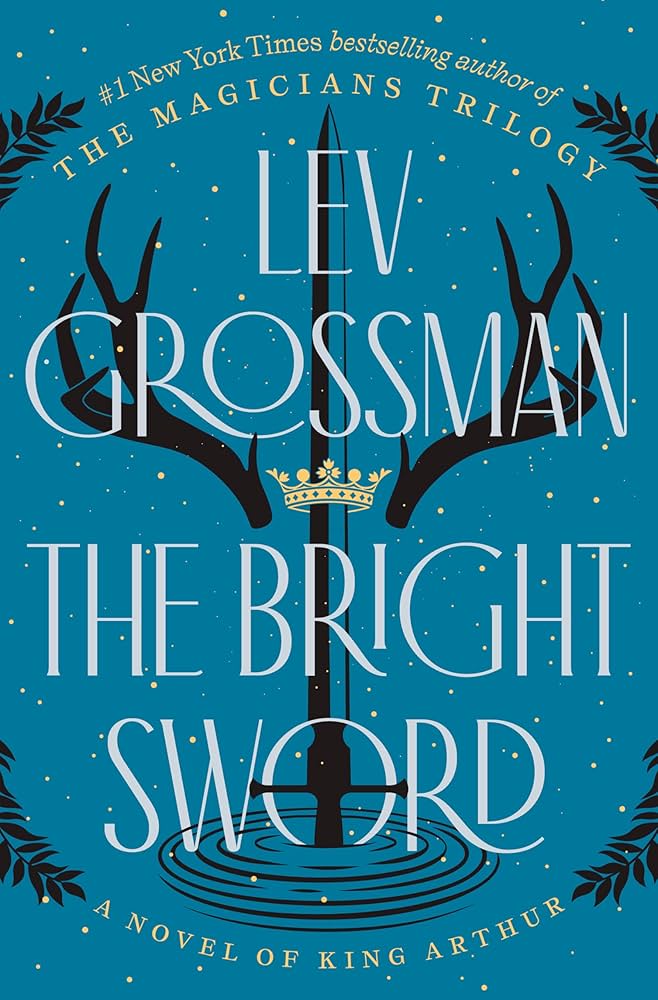
But of course it wasn’t over. Why would the future be simpler than the past? Stories never really ended, they just rolled on into the next. The past was never wholly lost, and the future was never quite found. We wander forever in a pathless forest, dropping with weariness, as home draws us back, and the grail draws us on, and we never arrive, and the quest never ends. Till the last day, and maybe not even then. Who knows what stories they tell in Heaven.
from The Bright Sword
Lev Grossman
Viking
The Once and Future Quest
A children’s version of King Arthur and his knights of the Round Table was the first chapter book I ever read. It was the beginning of a lifelong fascination with the Arthurian legend. The Bright Sword is the latest iteration of that legend.
As Lev Grossman explains in a historical note: “Arthur didn’t spring to life fully formed, he was deposited in layers, slowly, over centuries, like the geological strata of a landscape. It’s one of the things that makes him so rich and compelling. It also makes him, from a historical point of view, a complete mess.”
There is no historical proof that King Arthur ever existed. He may have been “an indigenous Celt,” living in Britain in the late 5th and early 6th centuries, probably after the Romans left and before the Anglo-Saxons arrived. He may have been a local chieftain fighting the Germanic invaders. But the legend, whatever its origins, grew. By the 12th century, Arthur had a royal wizard named Merlin and a nephew named Mordred, promoted to Arthur’s son in later versions. The French medieval poet Chrétien de Troyes added Camelot, the Holy Grail, and Queen Guinevere, along with the tale of her infidelity with Sir Lancelot. The Round Table and its knights appeared in the 14th century.
Over time, the legend continued to evolve through different re-tellings, Malory’s Le Morte d’Arthur (1485), Tennyson’s Idylls of the King (published 1859-1885), The Once and Future King by T.H. White (1958), my personal favorite, and notably Marion Zimmer Bradley’s feminist revision, The Mists of Avalon (1983), as well as in popular culture with the musical “Camelot”, Disney’s “Sword in the Stone”, and Monty Python’s iconic send-up.
Grossman (The Magicians trilogy) is only the latest to adapt the Arthurian legend to reflect our own contemporary times—Sir Bedivere has been in love with Arthur since they were youths, another knight is revealed to be a transgendered man, and Grossman’s dialogue frequently has the snarky, irreverent tone of a Netflix series. (Morgan le Fay stood in the doorway… “Morgan!” Collum shouted. “Please! Not now!” “I know, I know,” she said. “Don’t girls just spoil everything?”)
The story opens with Collum, a youth traveling to Camelot, aspiring to become a knight worthy of the Round Table. But upon arriving, he learns (Spoiler Alert) Arthur has died in battle, killed by Mordred. The greatest knights have also been vanquished. Only a motley, aging band of knights survive, having lost their will and purpose. “The last battle’s been fought, all the best died, and we’re what’s left,” he’s told.
But in Grossman’s telling, the Arthurian legend doesn’t need King Arthur. It is the quest, whether for the Holy Grail, a noble lady’s hand, or a good and just leader, that remains at the heart of the legend. And legends, unlike mortals, never die.
This review first appeared in The Columbia River Reader (September 15, 2024.) Reprinted with permission.

